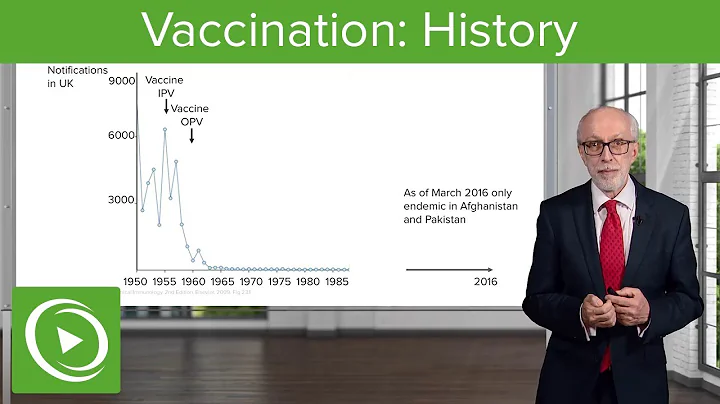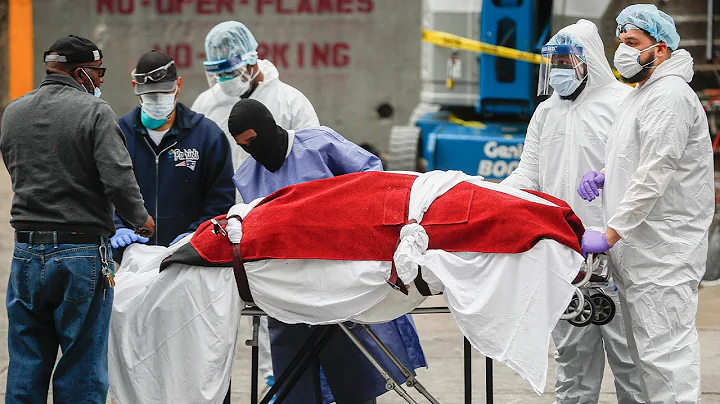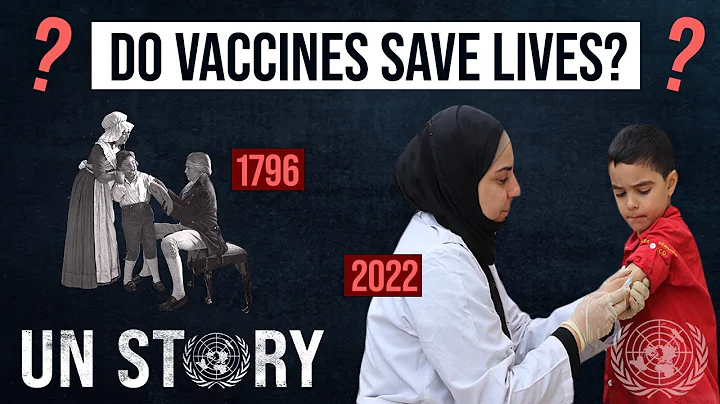The invention of the vaccine is a milestone in human history. In our fight against diseases, vaccination is the most economical, safe and effective means to control or even eliminate infectious diseases.
my country's preventive vaccines are divided into two categories: The first category of vaccines refers to vaccines provided by the government for free to citizens; The second category of vaccines refers to other vaccines that are voluntarily received by citizens at their own expense.
Currently, there are 11 kinds of first-class vaccines for children in my country, including hepatitis B vaccine , BCG vaccine, diphtheria-tetanus pertussis vaccine , etc. The first type of vaccines for use in adults or key groups are hemorrhagic fever vaccine, anthrax vaccine and leptospirosis vaccine.
At what age should children receive these 11 free vaccines? What diseases can these vaccines prevent? Which children cannot receive these vaccines?
"Too long to watch" version:
1. Children need to receive at least 22 doses of vaccines from birth to 7 years old. Different vaccinations have different age ranges. It is best to vaccinate according to the program. If the vaccination is not completed, you can catch up as soon as possible according to the relevant requirements for catch-up vaccination. ;
2. If the child is healthy, or there is no clear evidence that there are safety risks in vaccination, vaccination should be carried out according to the immunization schedule in principle. However, if the child has immune deficiency or is severely allergic to certain vaccine components, the contraindications of the specific vaccine should be followed. Required to choose whether to vaccinate
The vaccination age
At birth
The first dose of hepatitis B vaccine to prevent hepatitis B
The BCG vaccine to prevent tuberculosis (mainly refers to tuberculous meningitis , miliary tuberculosis, etc.)
htmlNovember
Get the second dose of hepatitis B vaccine
htmlDecember
Get the first dose of inactivated polio vaccine to prevent poliomyelitis (commonly known as polio)
htmlNovember
Get the second dose of inactivated polio vaccine
The first dose of diphtheria-tetanus-pertussis vaccine 1 dose to prevent whooping cough, diphtheria, tetanus
4 months
The 3rd dose of live attenuated polio vaccine to prevent polio (commonly known as sugar pill)
The 2nd dose of diphtheria-tetanus vaccine
5 months
Get the 3rd dose of diphtheria-tetanus pertussis vaccine
6 months
Get the 3rd dose of hepatitis B vaccine
Get the 1st dose of group A meningococcal polysaccharide vaccine to prevent Epidemic cerebrospinal meningitis
8 months
Get the 1st dose of measles-mumps vaccine to prevent measles, rubella, mumps
Get the first dose of live attenuated Japanese encephalitis vaccine to prevent epidemic Japanese encephalitis
Get the first and second doses of inactivated Japanese encephalitis vaccine to prevent epidemic B encephalitis
(Note: There are two types of vaccines to prevent Japanese encephalitis. When choosing the live attenuated Japanese encephalitis vaccine, a two-dose vaccination schedule is adopted; when choosing an inactivated Japanese encephalitis vaccine, a four-dose vaccination schedule is used. Vaccination procedure; the interval between the first and second doses of inactivated Japanese encephalitis vaccine is 7-10 days. )
9 month
Vaccination of the second dose of group A meningococcal polysaccharide vaccine
18 month
Vaccination of the 4th dose of diphtheria-tetanus pertussis vaccine
Vaccination of the second dose of measles and mumps vaccine
Vaccination of the first dose of live attenuated hepatitis A vaccine to prevent hepatitis A virus Sexual hepatitis
Get the first dose of inactivated hepatitis A vaccine to prevent hepatitis A
(Note: There are two types of vaccines to prevent hepatitis A. When choosing live attenuated hepatitis A vaccine, a one-dose vaccination procedure is adopted; When choosing inactivated hepatitis A vaccine, a two-dose vaccination schedule is used.)
2 years old
Get the second dose of live attenuated Japanese encephalitis vaccine
Get the third dose of inactivated Japanese encephalitis vaccine
Get the second dose of inactivated hepatitis A vaccine
3 years old
Get the third dose of group A and group C meningococcal polysaccharide vaccine, prevention Epidemic cerebrospinal meningitis
4 years old
Get the 4th dose of live attenuated polio vaccine
6 years old
Get the 5th dose of diphtheria vaccine to prevent whooping cough, diphtheria and tetanus
Get the 4th dose of inactivated Japanese encephalitis vaccine
Get A The fourth dose of group C meningitis polysaccharide vaccine

(Source: National Health Commission)
The above vaccination age refers to the minimum age at which this dose of vaccine can be vaccinated. The age range for children who reach the corresponding dose of vaccine is:
1 .The first dose of hepatitis B vaccine: completed within 24 hours after birth.
2. BCG vaccine: completed when less than 3 months old.

(Scar left by BCG vaccination/Source: Wikipedia)
3. The third dose of hepatitis B vaccine, the third dose of polio vaccine, the third dose of diphtheria-tetanus-pertussis vaccine, the first dose of MMR vaccine, and live attenuated Japanese encephalitis vaccine The first dose of vaccine or the second dose of inactivated Japanese encephalitis vaccine: completed when less than 12 months old.
4. The second dose of group A meningococcal polysaccharide vaccine: Completed when less than 18 months old.
5. The second dose of measles, mumps and rubella vaccine, the first dose of live attenuated hepatitis A vaccine or inactivated hepatitis A vaccine, and the fourth dose of diphtheria-tetanus-pertussis-pertussis vaccine: completed when less than 24 months old.
6. The second dose of live attenuated Japanese encephalitis vaccine or the third dose of inactivated Japanese encephalitis vaccine, and the second dose of inactivated hepatitis A vaccine: completed when less than 3 years old.
7. The first dose of group A and group C meningococcal polysaccharide vaccine: Completed when less than 4 years old.
8. The fourth dose of polio vaccine: Completed if less than 5 years old.
9. The second dose of diphtheria-tetanus vaccine, group A and group C meningococcal polysaccharide vaccine, and the fourth dose of inactivated Japanese encephalitis vaccine: completed when less than 7 years old.
If the child is within the above age range and has not completed the vaccination, he or she can consult the relevant doctor and carry out the revaccination as soon as possible according to the general principles of revaccination and the specific revaccination requirements of each vaccine.
Can these "special" children be vaccinated?
Although children should be vaccinated as soon as possible after reaching the vaccination age for the corresponding vaccines, some children are sometimes unable to receive these vaccines due to their special health conditions.
Allergic constitution
Just saying "allergic constitution" is too general, such as pollen allergy, dust mite allergy, etc., which have little to do with the vaccine ingredients and are generally not used as contraindications to vaccination.
However, if you are severely allergic to known vaccine ingredients or have experienced laryngeal edema , anaphylactic shock and other systemic severe allergic reactions due to vaccination in the past, you cannot continue to receive the vaccine.
Children born to human immunodeficiency virus (HIV)-infected mothers
There are three types of HIV infection status for children born to HIV-infected mothers: (1) HIV-infected children; (2) children with unknown HIV infection status; (3) HIV-unknown Infected children. The medical institution issues a diagnosis of whether the child is HIV-infected, has symptoms, or is immunosuppressed .
Infants younger than 18 months old who are born to HIV-infected mothers do not need to undergo HIV antibody screening before vaccination. Children with unknown HIV infection status will be vaccinated↓
1. Children born to HIV-infected mothers will postpone BCG vaccination after birth until it is confirmed that the child is not infected with HIV. Revaccination will be given later; when HIV infection is confirmed in children, BCG vaccination will not be given.
2. Children born to HIV-infected mothers who are diagnosed with AIDS related symptoms or immunosuppressive symptoms by medical institutions will not be vaccinated with measles-containing vaccines; if they have no AIDS-related symptoms, they can be vaccinated with measles-containing vaccines.
3. Children born to HIV-infected mothers can receive hepatitis B vaccine, diphtheria-tetanus pertussis vaccine, group A meningococcal polysaccharide vaccine, group A group C meningococcal polysaccharide vaccine and diphtheria-tetanus vaccine according to the immunization schedule.
4. Children born to HIV-infected mothers will not be vaccinated with live attenuated Japanese encephalitis vaccine, live attenuated hepatitis A vaccine, or live attenuated polio vaccine unless it is clear that they are not infected with HIV. They can be vaccinated with inactivated Japanese encephalitis vaccine, Inactivated hepatitis A vaccine, inactivated polio vaccine.
5. Children born to non-HIV-infected mothers do not need to undergo routine HIV screening before vaccination. If there are other exposure risks and the patient is diagnosed with HIV infection, subsequent vaccinations should follow the vaccination recommendations for HIV-infected children in the appendix.

(Source: National Health Commission)
In addition to HIV-infected children , children with other immune deficiencies or who are receiving systemic immunosuppressive treatment can be vaccinated with the inactivated vaccine . In principle, they are not allowed to receive the live attenuated vaccine (Except patients with complement deficiencies).
Premature infants and low birth weight infants
Premature infants (gestational age less than 37 weeks) and/or low birth weight infants (birth weight less than 2500 g), if medical assessment is stable and ongoing recovery (severe infection not requiring ongoing treatment, Metabolic diseases , acute kidney disease, liver disease, cardiovascular disease, neurological and respiratory diseases), vaccination according to the actual age after birth.

(Source: 123RF)
In short, if the child is healthy, or there is no clear evidence that vaccination poses safety risks, in principle, vaccination should be carried out according to the immunization schedule.
Vaccine can not only protect susceptible people, but also form a herd immunity barrier. When the vaccination rate reaches a certain level, even if an infectious source invades, since most people have been vaccinated and have immune protection, the transmission chain of infectious diseases will be blocked. By blocking and limiting the scope of transmission, the spread and spread of infectious diseases can be reduced.
Editor: Dr. Chunyu
Reference:
[1]. Expert consensus on informed notification of vaccination (Part 1) [J]. Chinese Vaccine and Immunization, 2021, 27(02): 121-151.
[2] Gao Dis , Zhen Cheng. Pay attention to children's vaccination to build a health barrier [J]. China Health Talents, 2021(04):72-73.
[3] The CDC and the National Health Commission issued the National Immunization Plan Vaccine Child Immunization Procedure and Notice of explanation (2021 version), 2021-03-12, http://www.nhc.gov.cn/jkj/s3581/202103/590a8c7915054aa682a8d2ae8199e222.shtml
Copyright statement: This article is an original manuscript, and the copyright belongs to Dr. Chunyu. Reproduction without authorization is prohibited. For authorization and cooperation matters, please contact [email protected]





















